10 Reading Revolutions Before E-Books

Via The Atlantic
1. The phrase “reading revolution” was probably coined by German historian Rolf Engelsing. He certainly made it popular. Engelsing was trying to describe something he saw in the 18th century: a shift from “intensive” reading and re-reading of very few texts to “extensive” reading of many, often only once. Think of reading the Bible vs reading the newspaper. Engelsing called this shift a “Lesenrevolution,” lesen being the German equivalent of reading. He thought he had found when modern reading emerged, as we’d recognize it today, and that it was this shift that effectively made us modern readers.In Elizabeth Eisenstein’s account in The Printing Revolution in Early Modern Europe, print changed readers’ expectations of texts, especially their universality and fidelity, since everyone everywhere was (in theory) reading an exact copy of an identical text. This assumption proved particularly instrumental in the subsequent Scientific Revolution. Benedict Anderson thought print helped readers of a common language in a highly fragmented Europe think of themselves as an “imagined community,” crucial to forming the modern nation-state. Marshall McLuhan and Walter Ong thought print helped further reorient language from sound to vision, paving the way for our screen-fixated present. This is a reorientation that, as Ong argued extensively, begins with writing itself.
3. There are many crucial developments in the very early history of writing, but for the sake of time/space (writing being the primary technology that allows us to think of these interchangeably), let’s cut to the emergence of the alphabet.
This fusion of orality and literacy helps explain the potency of classical Hellenic culture. Songs and dances became literature; disputations became rhetoric and philosophy. The Greeks were able to incorporate the knowledge of the civilized world in their own language, and in turn transmit their own amalgamated culture wherever they went. As Ong notes, unlike writing or agriculture, the alphabet was only invented once – every single alphabet and abjad can trace itself back to the same Semitic roots. It was (and remains) a revolution that happened over and over and over again.
4. Now, the other major pre-Gutenberg “revolution” in the history of the book (and by now you may be getting the hint that not one of these revolutions were total coups that changed everything everywhere in an instant, leaving nothing of the old order behind) was in the shape, size, and design of the book itself. The shift from the rolled scroll to the folded codex as the dominant form of the book radically affected readers’ conceptions not only of books, but of what kinds of reading were possible.
Read the entire article here.









